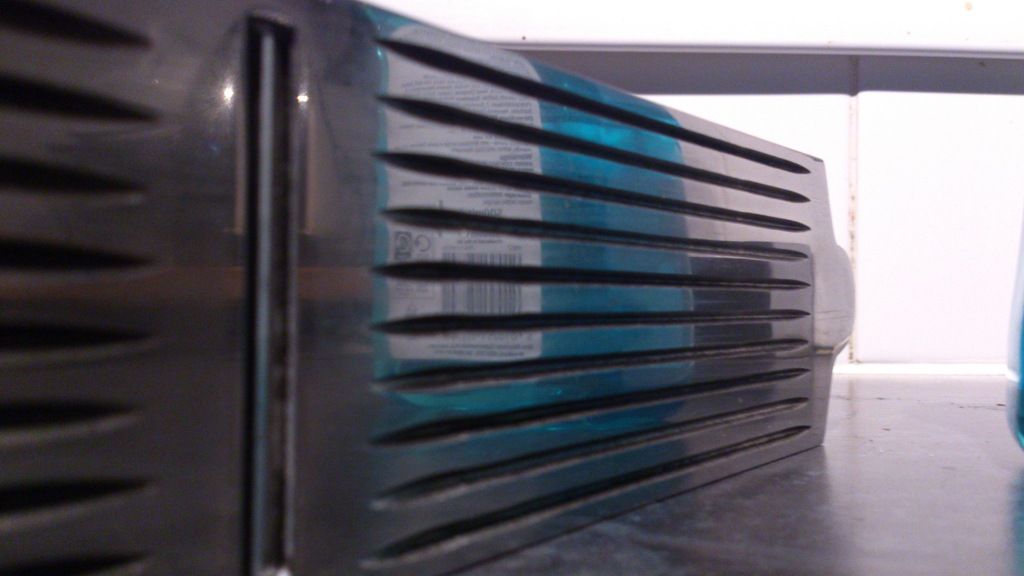Cheshirechappie
Established Member
Some months ago, I purchased a new, cheap Bailey-style Number 3 size plane. The sole wasn't flat - no way would it take a fine shaving, so this afternoon I set to with a jury-rigged surface plate, some Engineer's Blue, and a couple of files (8" second cut three-square and 6" smooth three-square) to get it a bit flatter. The process turned out to be quite quick (smear thin film of blue on surface plate, apply plane sole and rub once, lift off and file away the marked bits - the curved faces of the three-square file means you can get at spots in the middle of the sole if you have to) but resulted in a sole that, whilst flat and reasonably smooth, was not polished.
In order to check if a better shaving resulted, I reassembled the plane and tested it. Much better - thin shavings could be produced.
Not being satisfied with the surface finish, I then treated it to a good rubbing with 120, 240 and 400 grit wet-and-dry; the sole went from file-surface smooth to polished smooth. Just to see that all was well, I put the blade back in and tried it again.
To my surprise, the plane cut much better, producing even thinner shavings, and giving a more lustrous finish to the wood. The blade was not resharpened between tests, and the cap-iron remained undisturbed, so there was no influence on results from either. Unsurprisingly, there was far less sole friction, too.
The conclusion is therefore that a smoother finish to a plane sole can help to produce a better surface finish on the wood. It is true that the original filed finish was somewhat rougher than any plane sole would usually be, but the difference in performance between filed and papered finishes on the sole was quite startling.
If anybody has a 1980s or later plane with a sole finished on a linisher, it might be worth a bit of work with some wet-and-dry wrapped round a nice flat block of wood. Polishing the sole might improve the plane's performance noticably.
In order to check if a better shaving resulted, I reassembled the plane and tested it. Much better - thin shavings could be produced.
Not being satisfied with the surface finish, I then treated it to a good rubbing with 120, 240 and 400 grit wet-and-dry; the sole went from file-surface smooth to polished smooth. Just to see that all was well, I put the blade back in and tried it again.
To my surprise, the plane cut much better, producing even thinner shavings, and giving a more lustrous finish to the wood. The blade was not resharpened between tests, and the cap-iron remained undisturbed, so there was no influence on results from either. Unsurprisingly, there was far less sole friction, too.
The conclusion is therefore that a smoother finish to a plane sole can help to produce a better surface finish on the wood. It is true that the original filed finish was somewhat rougher than any plane sole would usually be, but the difference in performance between filed and papered finishes on the sole was quite startling.
If anybody has a 1980s or later plane with a sole finished on a linisher, it might be worth a bit of work with some wet-and-dry wrapped round a nice flat block of wood. Polishing the sole might improve the plane's performance noticably.



































